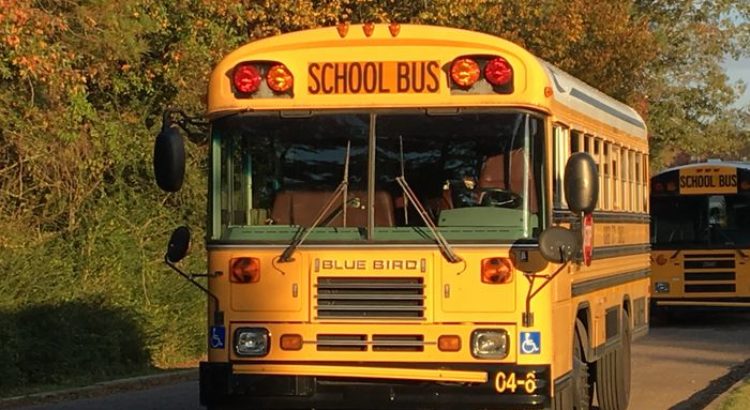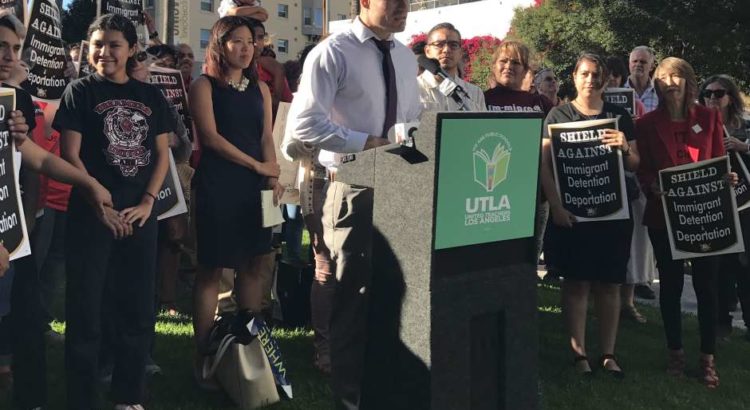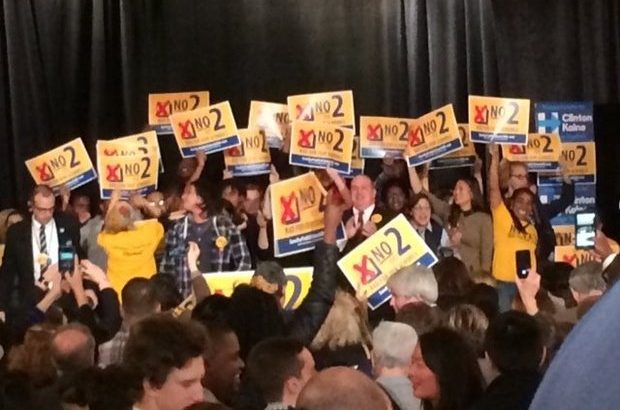Here are answers to your questions about education in Alabama
We asked readers to submit their questions about education in Alabama, through a question and answer service called Hearken. Here we’re answering those questions, and will continue to answer more as they come in. Scroll to the bottom of this post to submit your own!
We received a number of questions about school buses, which seems appropriate given that as of today, 129 school districts and three of the state’s charter schools (out of four) have started school.
I’d love to know why kids way down on 280 by Grandview Hospital have to be bused into Birmingham City Schools instead of going where the surrounding area is zoned. Considering the fact that most of these kids are minorities, this seems to be a direct violation of Brown v. The Board of Education. – Anna
The simple answer is that the city limits of Birmingham extend down Highway 280 into that area. Because of the 12 different school districts in Jefferson County, kids can be bused past a nearby school if it is in another district.
Here’s what the city limits of Birmingham look like on a map. Zooming in, you can see that the city limits extend down Highway 280.
Are school buses optional for school systems or just city systems? – Michael
Under Alabama law, county school districts are required to offer transportation. City school systems and public charter schools are not required by law to offer transportation except for students who are served by special education.
Why do Homewood, Vestavia Hills, Mountain Brook, and some others not have city school buses? Has this always been the case? Have there been efforts to get schools (sic) in these districts? (Very difficult as working parent!) – Mieke
As stated in the previous answer, Alabama law only requires county school districts to offer school bus transportation for students. The law does not require city school districts nor public charter schools to offer transportation.
Why do we pay bus drivers so little if we really value the lives of our children? – Dennis
Though we aren’t able to say exactly why, school bus drivers have traditionally been paid low amounts in Alabama. However, it wasn’t until we were researching this question that we found that Alabama’s school bus drivers are among the lowest paid in the nation.
According to the U.S. Bureau of Labor Statistics’ measures for all 50 states plus the District of Columbia, Guam, the Virgin Islands and Puerto Rico in 2018, the hourly average for Alabama’s school bus drivers at $9 per hour ranked 53rd—the next-to-lowest amount, but just above Puerto Rico’s average pay of $8.71 per hour.
Bus drivers in the District of Columbia earned the highest average hourly wage, at $21.55 per hour, followed by Alaska at $21.12 per hour.
In the Southeast, Florida is the highest-paying, at $13.80 an hour on average, with Georgia close behind at an average of $13.79 an hour. Even Mississippi, at $10.34 an hour on average, pays more than Alabama.
Bus drivers in Florida and Georgia earned on average $28,700 and $28,670 per year, respectively. Those amounts are nearly $10,000 higher than Alabama’s $18,720 average.
School bus drivers in Mississippi earned $21,520 on average.
The amount school districts in Alabama pay can vary. A quick look at Hoover City Schools, for example, showed starting bus driver pay to be $15,865 which equals $21.55 per hour, working four hours per day for 184 school days. Benefits typically add 19% on top of Alabama educators’ salaries, which comes out to $19,586 with benefits.
Bus drivers can earn extra money by driving for field trips and extracurricular activities.
How do school systems look different, administratively? Birmingham doesn’t have assistant principals in elementary schools, for instance. How much of a system’s budget is spent in classrooms compared to central office or transportation? – Michael
Administration in school systems across the state by and large look similar, judging by the personnel reports they submit to the state department of education. Depending on the measure used (dollars per student, central office staff to student ratio, etc.), there are outliers.
Regarding assistant principals, the state funding formula for schools, called the Foundation Program only provides funding for assistant principals when student enrollment reaches a certain level. Elementary schools with fewer than 500 students don’t receive any state funding for assistant principals. In middle and high schools, student enrollment must reach 250, and then the state will provide half of the funding.
School systems have to use local tax support to pay for whatever the state doesn’t. In rare cases, federal funding may be used to support schools with high percentages of students in poverty.
Here’s a chart showing at what enrollment level the state funds assistant principals. It’s taken from the “State Guide to School Allocations, 2018-19.”
The second question, regarding how money is spent in schools, is partially answered in this data visualization, published with our big look at school-level spending during the 2017-18 school year.
The visualizations are best viewed on a laptop, desktop, or large tablet.
Narrow down by what function (transportation, school administration, etc.) you’re interested in. Narrow down further by system. Click the top of the bar column to sort.
Seeing how much is spent on classrooms versus central office is a little bit trickier. The information published by the state department doesn’t delve into detail in that particular way. But it does break down expenditures by “direct” versus “pooled” expenditures.
“Direct” means the money was spent at the school level for students enrolled in that school. For example, that means the cost of teachers and staff that work at the school (salary and benefits), the cost of supplies or maintenance at the school, and any
“Pooled” means the money was spent on a function or service that was delivered as a result of a function housed at the central office or other non-school-based facility.
Here’s a look at that data. Narrow down by system. Click the top of any column to sort.
How do educators sign up to be trained in LETRS? – Kathy
Any Alabama public school pre-K through third-grade teacher can sign up for LETRS training at this link. LETRS training is offered to help teachers understand the science of reading, meaning how children learn to read. Read more here about the new Alabama law that requires third-grade students to be reading on grade level by 2021-22. .
Why don’t they start back after Labor Day like they did when I went to school. Get out the middle of May instead of the later part of May. It would save the systems money on air conditioning the schools in the hot August month. Their always saying they don’t have enough funding for the schools and that would be a way to cut back on expenses. – Sue
AL.com recently covered this topic, which showed 85% of voters agree with you. The director of the superintendents’ association gave a lot of reasons why school systems spread out the school year and why local boards of education should retain control the school calendar. Read more here.
These are just a few of the questions we received. Some required much more research than others, and we wanted to share these that we were able to find fairly quickly. Stay tuned for more answers.
Fuente de la Información: https://www.al.com/news/2019/08/here-are-answers-to-your-questions-about-education-in-alabama.html


 Los estudiantes serán los más afectados si no hay una solución en el Congreso para que los maestros beneficiados con DACA puedan continuar en la enseñanza.
Los estudiantes serán los más afectados si no hay una solución en el Congreso para que los maestros beneficiados con DACA puedan continuar en la enseñanza. Muchos jóvenes DACA trabajan como maestros en escuelas públicas y charter en California. (Aurelia Ventura/ La Opinion)
Muchos jóvenes DACA trabajan como maestros en escuelas públicas y charter en California. (Aurelia Ventura/ La Opinion)







 Users Today : 185
Users Today : 185 Total Users : 35459780
Total Users : 35459780 Views Today : 345
Views Today : 345 Total views : 3418317
Total views : 3418317